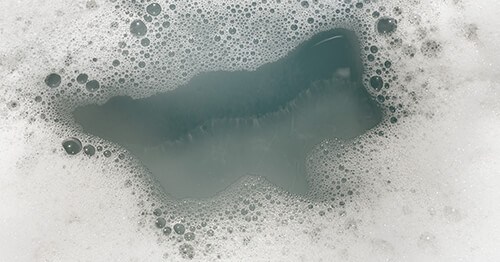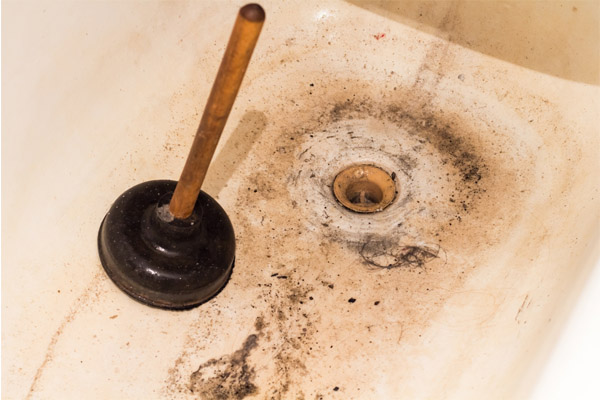Crucial Explanations for Waste in the Bathtub
Crucial Explanations for Waste in the Bathtub
Blog Article
They are making a few good points on the subject of Water Coming up Bathtub Drain overall in the article followed below.

Sewage back-up in the bathtub can be an upsetting and unhygienic issue for any type of property owner. Not just is it troublesome, however it also positions serious health risks and shows underlying issues with the plumbing system. Comprehending why sewer is showing up through the bath tub is critical for taking proper action to attend to the trouble effectively.
Intro to the Problem
Typical Reasons for Sewer Backup
Clogs in the Drain Line
Among the most common causes of sewer back-up is an obstruction in the sewer line. This can take place because of the buildup of debris, grease, or international objects in the pipes, avoiding correct circulation and causing sewage to support into your bath tub.
Tree Root Invasion
Tree roots looking for moisture and nutrients can infiltrate sewage system lines through tiny splits or joints. With time, these roots can grow and increase, creating significant damage to the pipelines and causing sewer back-up concerns.
Understanding the Issue
When sewage starts backing up right into the bathtub, it's a clear indication of a problem with the drainage system. The wastewater that should be flowing far from your home is instead locating its back into your space, which can bring about substantial damage and carcinogen.
Prospective Causes
Several elements can add to sewer backup in the bath tub. From obstructions in the drain line to concerns with the plumbing facilities, determining the source is necessary for finding an option.
Aging Facilities
Older homes may have dated plumbing systems that are more prone to corrosion, splits, and deterioration. As pipelines age, they end up being much more susceptible to leaks and clogs, boosting the likelihood of sewer backup incidents.
Heavy Rainfall or Flooding
Throughout durations of heavy rainfall or flooding, the drain system might come to be overloaded with excess water, triggering backups and overflows. This can result in sewage backing up into tubs and various other components inside the home.
Indications of Sewer Backup
Foul Odors
Unpleasant odors rising from drains or fixtures, specifically in the restroom, may indicate sewage backup problems. These odors are frequently strong and consistent, signifying an issue that requires instant focus.
Slow Draining Fixtures
Bath tubs, sinks, and bathrooms that drain pipes slowly or otherwise in any way could be experiencing sewer back-up. If several components are affected at the same time, it's likely that the issue originates from a typical point, such as the primary sewer line.
Gurgling Sounds
Strange gurgling or gurgling noises originating from drains when water is running in other places in your home are indicative of air caught in the plumbing system. This air accumulation can arise from sewage backup and must be explored quickly.
Wellness Risks Connected With Sewer Back-up
Contamination of Water Supply
Sewer back-up can infect the supply of water in your home, presenting a significant wellness threat to you and your family. Direct exposure to polluted water can lead to stomach concerns, skin infections, and other health problems.
Mold and mildew Growth
Moisture from sewage backup can develop excellent conditions for mold growth in your home. Mold and mildew spores can aggravate respiratory system issues and trigger allergies in delicate people, making prompt cleanup vital.
Spread of Illness
Sewer has hazardous bacteria, viruses, and parasites that can cause a series of diseases, consisting of hepatitis, cholera, and gastroenteritis. Entering contact with sewage or infected surfaces puts you in jeopardy of infection.
Tidying up After Sewer Backup
Sanitation Procedures
Completely sanitize and sterilize affected areas after sewer back-up to get rid of unsafe bacteria and avoid mold growth. Usage proper cleaning products and protective equipment to guarantee secure and effective cleaning.
Restoration of Influenced Areas
Repair any kind of damage to floor covering, walls, or components caused by sewage backup. Depending on the degree of the damage, you might need to replace carpeting, drywall, or various other materials to restore your home to its pre-loss condition.
Immediate Actions to Take
Turning Off Water Supply
In case of sewer back-up, it's important to switch off the water to stop additional contamination and damages. Locate the primary water shutoff valve in your home and closed it off up until the issue can be settled.
Getting In Touch With an Expert Plumber
Managing sewage back-up is not a do it yourself work. Get in touch with a licensed plumber with experience in handling sewage-related issues to examine the situation and do required repair services or cleanings.
Avoiding Contact with Contaminated Water
Until the sewage back-up is solved, stay clear of contact with polluted water to prevent the spread of germs and pathogens. Put on safety equipment if you need to be in the damaged area and clean your hands completely afterward.
Safety nets
Routine Upkeep of Sewer Lines
Arrange routine inspections and upkeep of your drain lines to recognize and resolve potential issues prior to they intensify into major issues. This can consist of clearing out particles, checking for tree origin breach, and repairing any broken pipelines.
Installing Bayou Valves
Consider setting up backwater shutoffs in your plumbing system to prevent sewage from flowing back into your home throughout durations of heavy rainfall or flooding. These valves automatically close when water starts backing up, safeguarding your building from contamination.
Appropriate Disposal of Family Waste
Prevent purging anything apart from bathroom tissue and human waste down the bathroom to stop obstructions and blockages in the drain line. Dispose of grease, oil, and other home chemicals correctly to decrease the threat of plumbing problems.
Why Is Water Backing Up in My Bathtub When I Flush My Toilet?
What to do about a sewer line clog
First, don’t bother with plunging. No amount of plunging will dislodge the clog in a sewer line. The clog is too far away. Plungers are for clogs in the toilet itself, not the sewer line. Plus, the most likely causes of a sewer clog are:
Tree roots Flushed toys or feminine products Grease buildup Those items don’t move easily. And in the case of tree roots, the roots need to be cut out of the pipe and the pipe will need to be repaired.
You’ll need a closet auger. A closet auger is a type of plumber’s snake with a protective cover to keep from scratching the delicate porcelain toilet. If the clog is further down, you may need to remove the toilet or use one of your cleanouts to get to the clog.
We also recommend doing a video inspection of the drain to ensure that the cause of the clog has been completely removed. Otherwise, you could have the same problem again in a few days or weeks.
https://mspplumbingheatingair.com/blog/why-is-water-backing-up-in-my-bathtub-when-i-flush-my-toilet

I ran across that blog entry on What To Do If Sewage Starts Backing Up Into the Shower when scouting around the search engines. Appreciated our content? Please quickly share it. Help other people locate it. Thank you so much for going through it.
Schedule A Service Call
Report this page